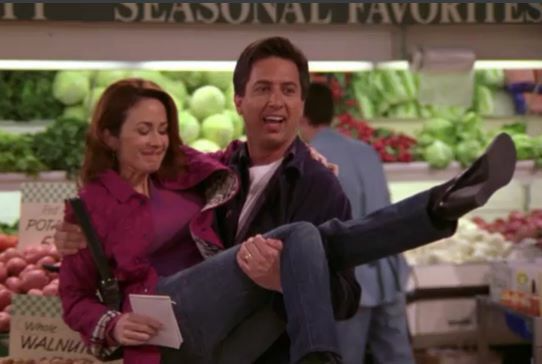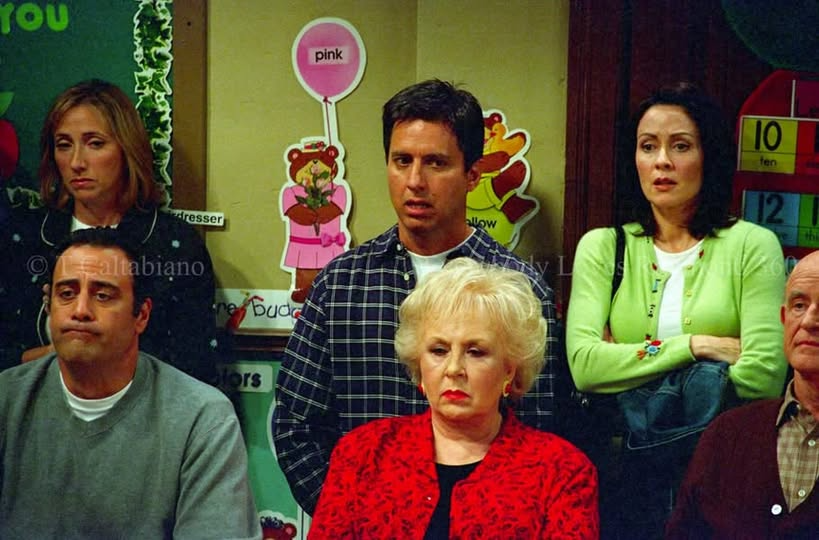
Why Is ‘Everybody Loves Raymond’ So Hard to Watch Now?
Revisiting a beloved sitcom like Everybody Loves Raymond can feel like opening a time capsule. It’s cozy, familiar… and sometimes, surprisingly uncomfortable. What used to make us laugh in the late ’90s and early 2000s might now feel tone-deaf, problematic, or just plain outdated. But why is that?
Let’s break it down and see why Everybody Loves Raymond doesn’t always hit the same in today’s world.
The Sitcom That Once Ruled Prime Time
A Cultural Phenomenon of Its Time
When Everybody Loves Raymond first aired in 1996, it quickly climbed the ladder to sitcom royalty. Ray Romano’s dry humor, the bickering in-laws, the suburban chaos—it all felt so relatable. For nearly a decade, it delivered dependable laughs and high ratings.
Timeless or Stuck in Time?
Fast forward to today, and the show’s once-universal charm isn’t quite as effective. What changed? Spoiler: It’s not just the laugh track.
Comedy’s Evolution Over the Decades
Humor That Doesn’t Age Well
Humor is a living, breathing thing. What cracked people up 20 years ago might fall flat—or worse, feel offensive—today. Jokes that revolve around gender stereotypes, nagging wives, lazy husbands, or clueless parenting no longer have the same punch.
The Problem With Punching Down
Much of Everybody Loves Raymond’s humor leans on making someone the butt of the joke. Often, it’s Deborah, Ray’s wife, portrayed as naggy or uptight, while Ray is seen as the lovable but inept goofball. That dynamic hasn’t aged gracefully.
Gender Roles That Raise Eyebrows
Deborah’s Eternal Frustration
Patricia Heaton, who played Deborah, once joked that her character was perpetually annoyed—and rightly so. Deborah is a working mom, doing most of the emotional and physical labor, while Ray gets to be “fun dad.” It’s no longer funny; it’s frustratingly real.
Ray’s Man-Child Persona
Ray is your classic sitcom dad—clueless, lazy, and conflict-averse. What used to be endearing now feels like glorified irresponsibility. We now expect better portrayals of men, especially in parenting roles.
Family Dynamics That Feel Dysfunctional
Frank and Marie’s Toxic Traits
Peter Boyle and Doris Roberts played Ray’s parents, Frank and Marie—two of the most iconic (and annoying) sitcom characters. But let’s be honest: they’re emotionally manipulative, nosy, and sometimes downright mean.
Laughing at Emotional Abuse?
Marie’s passive-aggressive guilt trips and Frank’s verbal jabs aren’t just quirky anymore. Viewed through a modern lens, their behavior borders on emotionally abusive—and that’s not exactly laugh-out-loud material.
A Lack of Representation
Where Are the Diverse Characters?
The show takes place in New York, one of the most diverse cities in the world, yet the cast is almost entirely white. Today’s audiences are more aware of representation, and Everybody Loves Raymond doesn’t reflect the multicultural world we live in.

Outdated Social Norms and Values
Marriage Isn’t a War Zone
So much of the humor in Everybody Loves Raymond relies on the idea that marriage is a constant battle. The “men are simple, women are complicated” trope isn’t just old—it’s lazy writing by today’s standards.
Normalizing Dysfunction
When dysfunction is the punchline, it sends the message that toxic behavior is just part of life. That doesn’t sit well with a generation raised on therapy memes and emotional intelligence.
The Laugh Track Problem
Forced Laughter in a Changed Landscape
Today’s comedies like The Office, Abbott Elementary, or Ted Lasso use silence and subtlety. The laugh track in Everybody Loves Raymond feels forced—like it’s telling you when to laugh instead of earning the laughs naturally.
Comparing to Modern Sitcoms
New Sitcoms, New Standards
Modern sitcoms emphasize character growth, emotional nuance, and inclusivity. Shows like Brooklyn Nine-Nine or Schitt’s Creek balance humor with heartfelt moments and reflect evolving values.
Raymond’s Stagnant Characters
The characters in Everybody Loves Raymond rarely grow. Ray remains childish, Deborah remains stressed, and Frank and Marie never change. This kind of character stagnation doesn’t fly anymore.
Changing Audience Expectations
Smarter Audiences, Sharper Comedy
We expect more from comedy now. Audiences want layered storytelling, meaningful character arcs, and jokes that don’t punch down. Everybody Loves Raymond often takes the easy way out.
The Nostalgia Trap
Loving the Past While Acknowledging Its Flaws
It’s okay to still enjoy Everybody Loves Raymond—nostalgia is powerful. But it’s also important to view it critically and recognize how far we’ve come in comedy, storytelling, and social awareness.
Should You Still Watch It?
Enjoy With a Grain of Salt
If you decide to rewatch it, do it with awareness. Laugh where it’s still funny, cringe when it’s outdated, and appreciate how much the genre—and society—has evolved.
Final Thoughts
Everybody Used to Love Raymond… But Times Have Changed
Everybody Loves Raymond was a product of its time. It brought joy to millions, but it also reflected values and humor that don’t always align with today’s worldview. And that’s okay. We can appreciate it for what it was—while also demanding better from what comes next.
FAQs
1. Is ‘Everybody Loves Raymond’ still worth watching in 2025?
Yes, but with a critical eye. It offers nostalgic comfort but also showcases how TV has evolved since the 1990s.
2. Why does the humor in the show feel outdated?
Much of the humor relies on gender stereotypes, dysfunctional family dynamics, and tired tropes that don’t resonate with modern viewers.
3. Did the creators intend to be offensive?
Not likely. The show reflected mainstream values of its time. However, what was once considered “normal” comedy may now appear insensitive.
4. Are there better modern alternatives to the show?
Absolutely. Sitcoms like Modern Family, Schitt’s Creek, and Ted Lasso offer humor with progressive values and character growth.
5. Can old sitcoms like this still be enjoyed today?
Yes, with context. It’s okay to enjoy older shows as long as we also acknowledge the ways they fall short by today’s standards.
